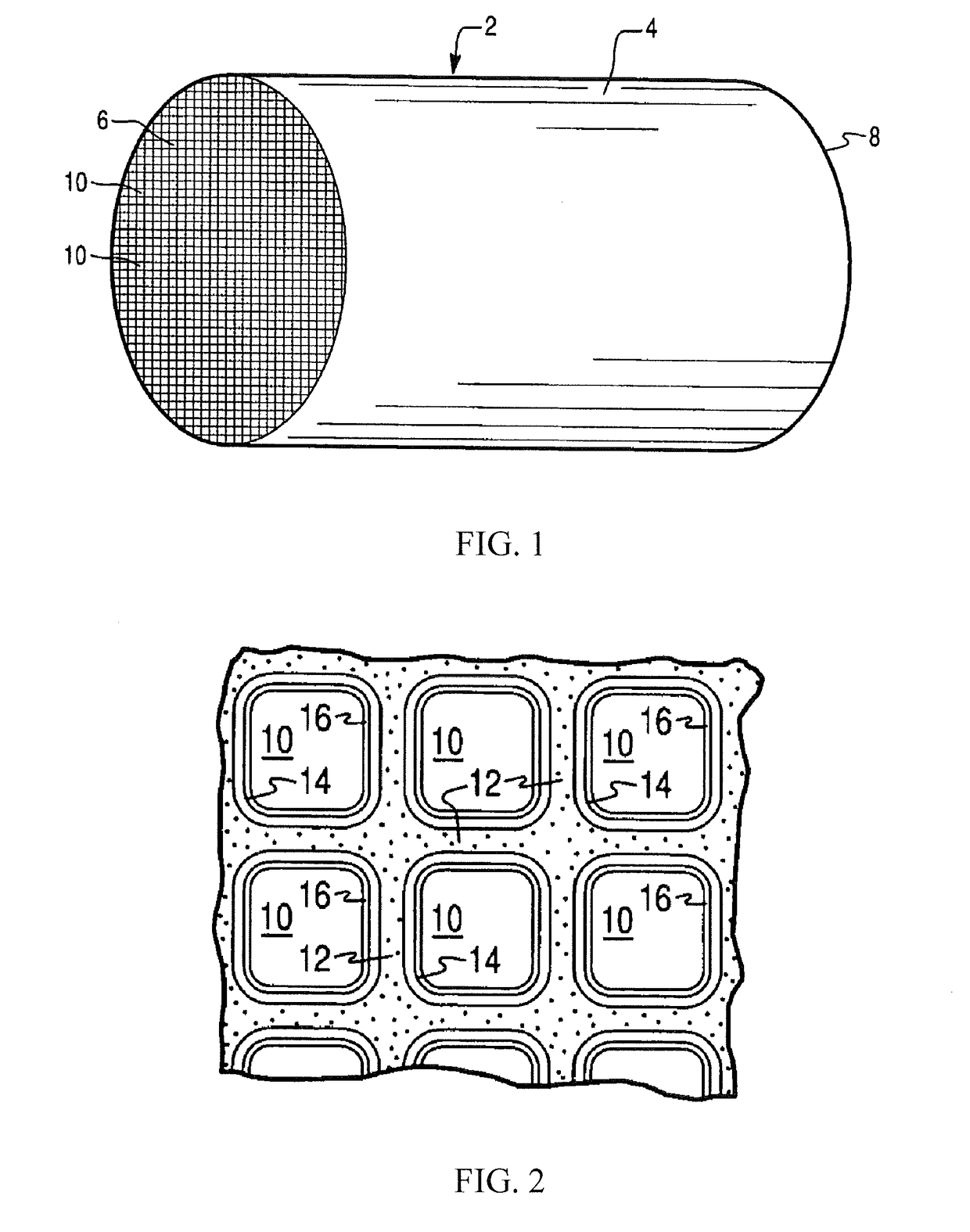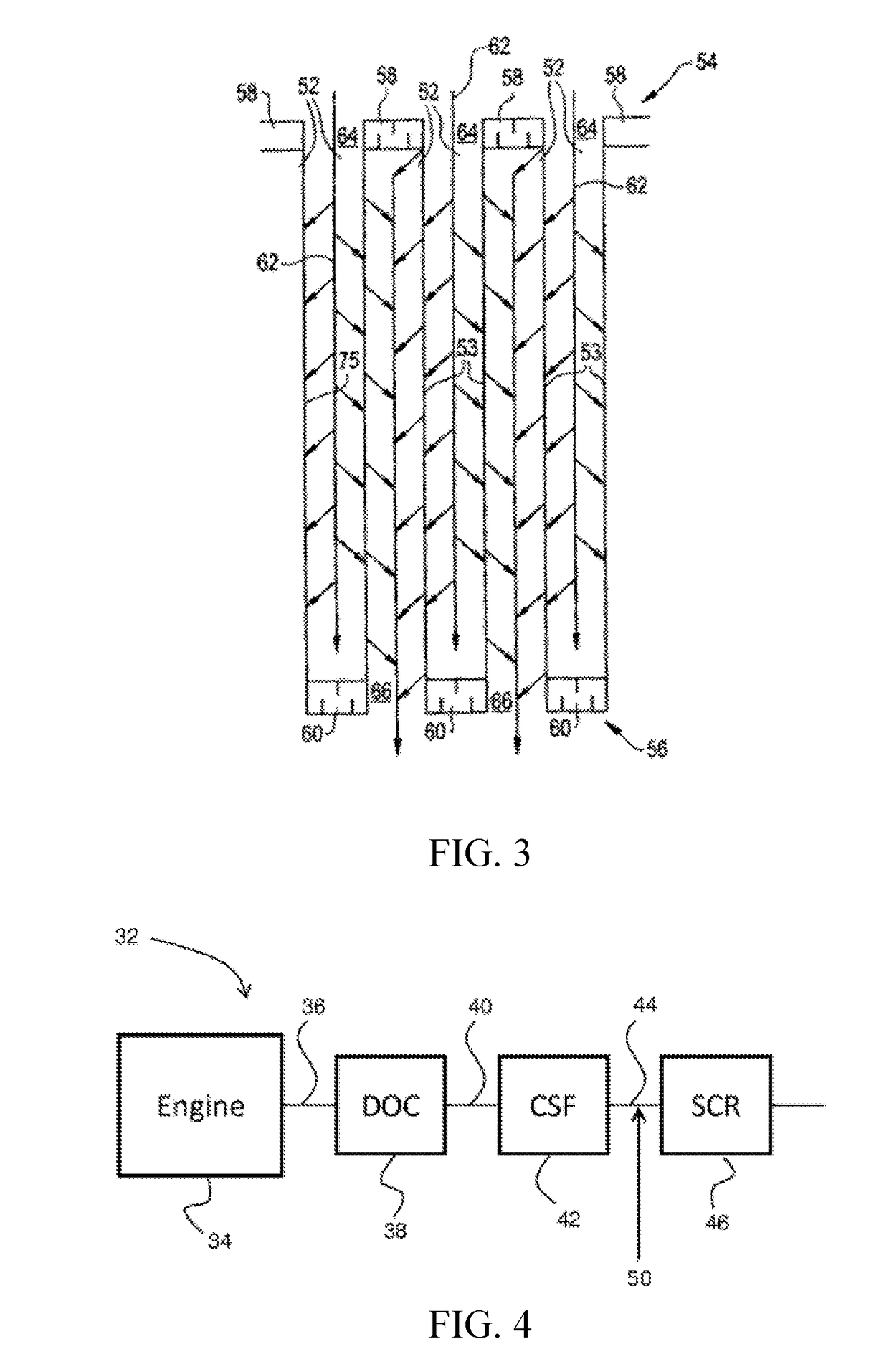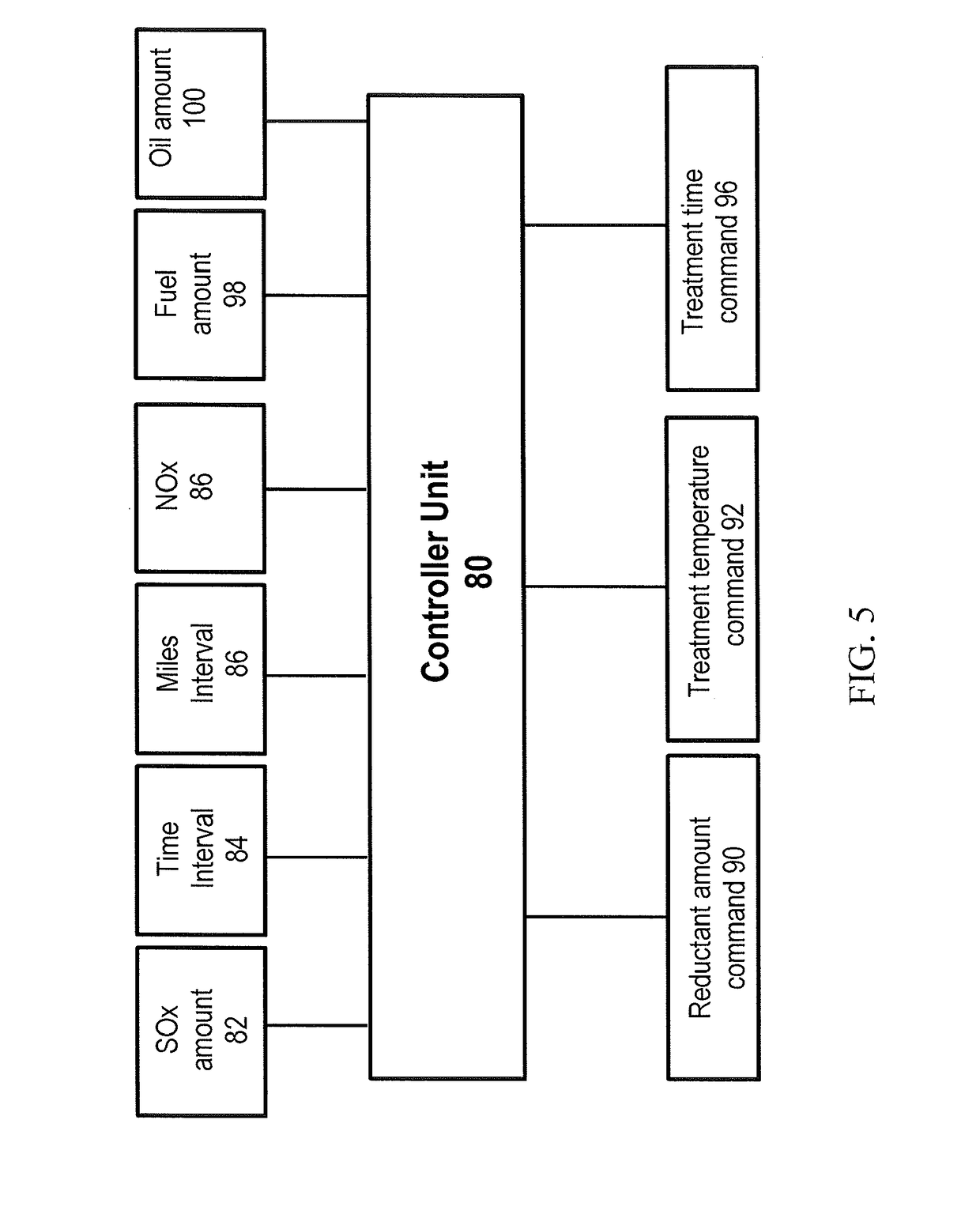Desulfation method for scr catalyst
- Summary
- Abstract
- Description
- Claims
- Application Information
AI Technical Summary
Benefits of technology
Problems solved by technology
Method used
Image
Examples
example 1
n of Copper Ion-Exchanged CHA Zeolite Catalyst Composition as an SCR Catalyst for Decreasing Diesel NOx
[0178]Two samples of a copper-promoted CHA zeolite material were exposed to SCR testing conditions to establish a benchmark for SCR performance. Two cordierite honeycomb flow through monoliths with dimensions of 1″ diameter×3″ length, 400 cpsi, and 4 mil. coated with a copper-promoted CHA zeolite washcoat were degreened by thermal treatment at 650° C. for 4 hours.
[0179]Nitrogen oxides selective catalytic reduction (SCR) efficiency of the degreened catalyst monoliths was measured by adding a feed gas mixture of 300 ppm of NO, 300 ppm of NH3, 10% by vol. O2, 5% by vol. H2O, balance N2 to a steady state reactor containing the coated monolith. The gases, O2 (from air), N2 and H2O, were preheated in a preheater furnace before entering the reactor. The inlet temperature was 220° C. The reactive gases NO and NH3 were introduced between the preheater furnace and the reactor. The reaction w...
example 2
of Copper Ion-Exchanged CHA Zeolite Catalyst Composition
[0180]Five samples of a DOC catalyst flow through core and five samples of an SCR catalyst flow through core were prepared. The DOC catalyst cores were 1″ by 1″ cores removed from a cordierite flow through monolith (300 cpsi and 5 mil wall thickness) wash coated with a DOC catalyst composition including only Pt (about 20 g / cft). The SCR catalyst cores were 1″ by 3″ cores removed from a cordierite flow through monolith (400 cpsi and 4 mil wall thickness) wash coated with a copper-promoted CHA zeolite. SCR cores were degreened by thermal treatment at 650° C. for 4 hours. DOC cores were degreened by thermal treatment at 500° C. for 4 hours. The DOC and SCR cores were paired and tested in series with the DOC upstream to increase the SCR temperature and generate SO3. The DOC-SCR paired cores were exposed to sulfation conditions as follows. Sulfation of sample was measured by adding a feed gas mixture of 15 ppm of SO2, 10% by vol. O2...
example 3
n of NOx Conversion Activity of a Sulfur-Poisoned Copper Ion-Exchanged CHA Zeolite Catalyst Composition
[0182]A single SCR core sample from Example 2 was exposed to conditions for testing SCR performance as set forth in Example 1. The measured deNOx efficiency for the sulfated sample was 22.1%.
PUM
| Property | Measurement | Unit |
|---|---|---|
| Temperature | aaaaa | aaaaa |
| Temperature | aaaaa | aaaaa |
| Temperature | aaaaa | aaaaa |
Abstract
Description
Claims
Application Information
 Login to View More
Login to View More - R&D
- Intellectual Property
- Life Sciences
- Materials
- Tech Scout
- Unparalleled Data Quality
- Higher Quality Content
- 60% Fewer Hallucinations
Browse by: Latest US Patents, China's latest patents, Technical Efficacy Thesaurus, Application Domain, Technology Topic, Popular Technical Reports.
© 2025 PatSnap. All rights reserved.Legal|Privacy policy|Modern Slavery Act Transparency Statement|Sitemap|About US| Contact US: help@patsnap.com



